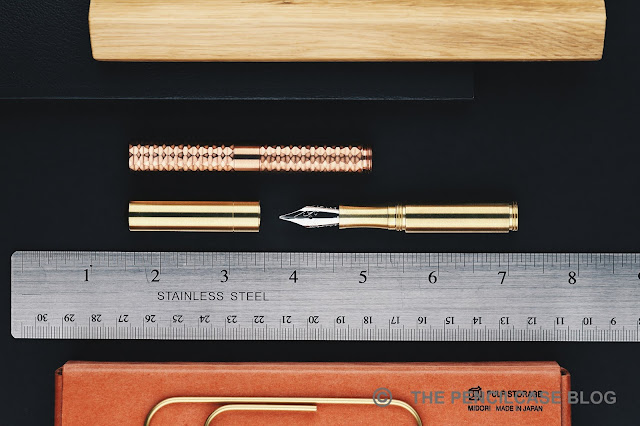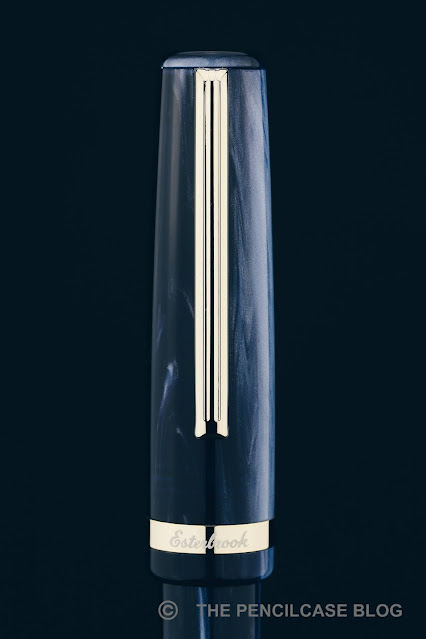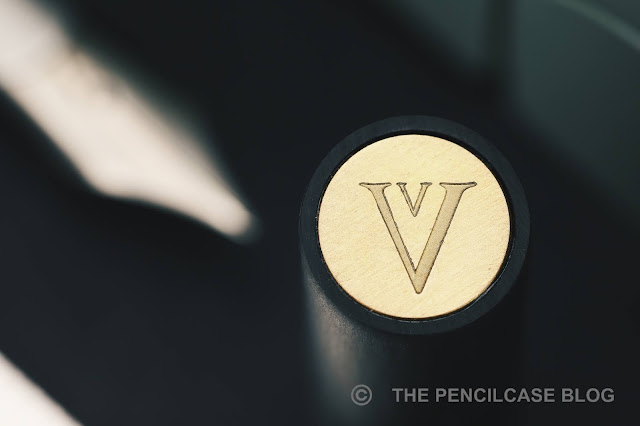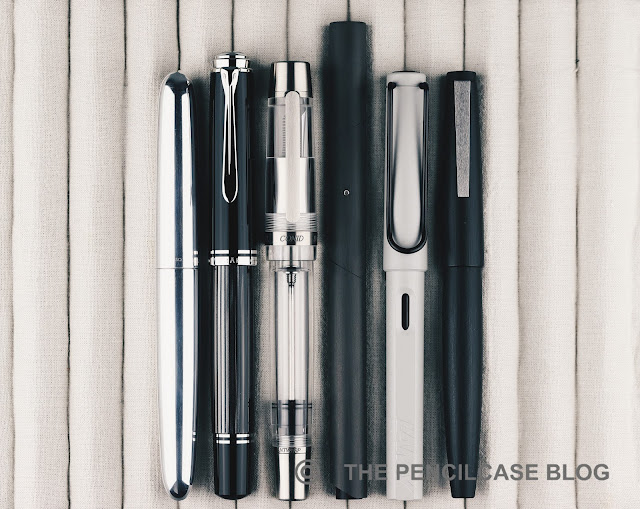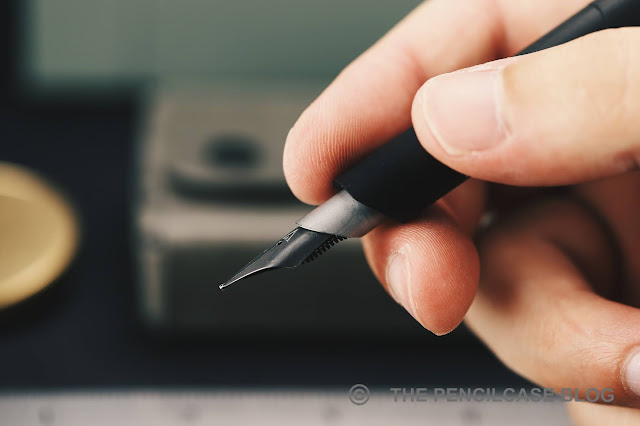Let me start off by saying the Schon Dsgn Pocket six has been perhaps the most fun I've had with a pen in recent history! Knowing that I tend to not use pocket pens very often (simply not enough practical use for them in my daily carry), the fact that I've carried this pen with me more than anything else since I've received it, says quite a lot!
For those of you that don't know Ian Schon, man behind the brand, he's one of the most sympathetic minds in our industry. As an engineer and obsessed with the tiniest details, he's constantly showing new techniques and tricks he found to improve his products, on social media. I've always found this kind of "how it's made" content incredibly fascinating to follow, and especially lately when he started doing unique hammered finishes on the Pocket Six (P6), I was hooked!
But, I'm getting ahead of myself! Let's take a look at the P6, shall we? Btw, thanks to Ian for sending a 'normal' brass version of the P6 along with the faceted copper pen I bought. Since the faceted Pocket Six is only available in limited quantities due to production capacity, it wouldn't make sense to review the faceted version standalone, because it might not be available continuously.
The P6 carries over the sort of industrial minimal design language of the original Schon Dsgn ballpoint Pen (that I reviewed HERE), but I feel like it adds some welcome refinement, and slightly gentler lines to the design. The cap finial is subtly rounded for a softer look, and symmetry is still key with the machined line on the cap offsetting the break between barrel and cap - giving the illusion of a 'center band' - so that cap and barrel look like they're equally long (even though they're not). Underneath the cap, you get a nice concave section shape, which is more pleasant to hold than the straight and featureless section on 'the Pen'.
Refined or not, you're still getting a machined metal pen, with a machined finish. Function before form, with exposed block threads at the back of the barrel, onto which the cap posts.
We haven't talked about the elephant in the room yet! Exotic finishes are sort of Ian's trademark, with crazy anodized options available for the aluminium version of the P6, but also this jaw-droppingly beautiful faceted version of the P6, available for the brass or copper versions! As I said earlier, I've been following Ian's journey in hand-finished hammered finishes (which I tried myself as well!), And then he completely caught me off-guard with this semi-irregular machined faceted finish! The way the light hits the geometric pattern... It's amazing in person, and the detail of the machined and hand-polished finish is ridiculous. I guess the photos will speak for itself!
The p6 is clipless, which was an omission on the original Schon Pen too, but that pen eventually received an update with a clipped version ('the clip', simple naming convention certainly is Ian's thing!). I'm not saying the P6 might not receive a similar upgrade later on, but technically I find it doesn't need a clip to function as a pocket pen. True pocket pens like this are small enough to carry IN your pants pocket comfortably, instead of being clipped to them, so I haven't found it a particularly big issue.
 |
| L to R: Milim Pro Pocket fp, Inventery Pocket fp, Ensso XS, Schon Dsgn Pen, Schon Dsgn P6, Kaweco Lilliput, Kaweco Supra, Kaweco Sport, Lamy Safari, Lamy 2000 |
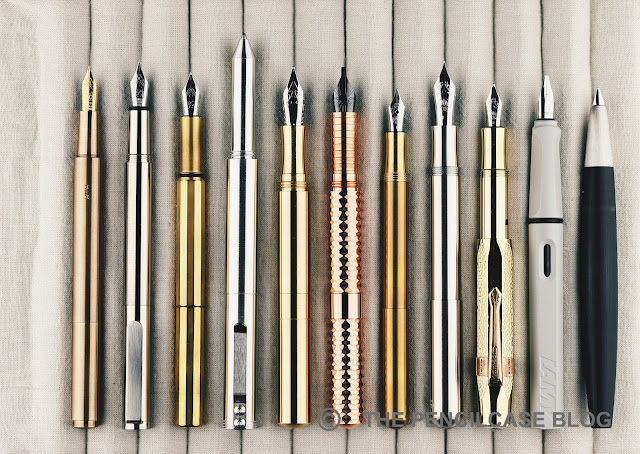 |
| The P6 still comes out as one of the biggest pocket pens, despite its tiny form factor! |
The P6 is tiny. Really tiny. Imagine tiny, and then make it a bit smaller still, that's how small this pen is! I had read up enough to think that I had a good idea of the size, but even I was thoroughly surprised when I saw it in real life for the first time.
In hard numbers, the P6 translates into a pen that's 9 cm/ 3.55" capped, and a convincing full-sized 13.2cm/ 5.2" when the cap is posted. The p6 is - in proportion to the length - a bit skinnier than I imagined, although it has to be said that 12.7 mm/ 0.5" is a very decent diameter for a small pen like this. Most notable of all: it's shorter than a Kaweco Lilliput... let's take a second to let that sink in! It's the absolute shortest pen I own, and yet when open and posted, it's comfortably sized in any possible way.
 |
| 'regular' concave section left, 'new' ridged section right |
The P6 is now available with two section options to choose from, after some suggestions that a slightly girthier section would add to the comfort. The new, straight section is a complete redesign from the simple, concave shape of the regular version. The new section has a straight constant diameter of 9.9 mm/ .390", compared to the concave section which is just a millimeter narrower at the thinnest point, at 8.9 mm/ .350". It's noticeably longer and has a grooved texture along its' entire length, which is smooth and pleasant to hold.
Aesthetically, I most definitely prefer how the concave section matches the rest of the pen's clutter-free design... But the larger section does make a fair point in terms of comfort, and even the slight difference in diameter is appreciated. The nib is seated noticeably deeper inside the section to account for the added length of the section itself. The slightly wider diameter of the new section also mates a bit better to the threaded section of the barrel, which makes for a more pleasing and smooth transition. The block threads are noticeable and there is a bit of a step towards the barrel, but given how much section real estate you get on such a small pen (especially with the new larger section!), comfort isn't bad at all for a pocket pen!
A small detail that I particularly like on the P6 is the incorporation of a rubber o-ring on the inside of the cap. It seals against the small straight section in front of the threads (very similar to Karas' Sta-Fast system on the new Ink fountain pen!) and effectively keeps the nib from drying out, or keeps possible ink leaks contained (not that I had any issues with that so far). Just like with the Karas Ink, the o-ring also adds a smooth, reassuring resistance to the capping action.
The flipside of a super-duper-small pocket pen is that a converter obviously won't fit - except maybe one of those Kaweco converters, but those are more hassle than function - so you're limited to cartridges. Syringe-filling is the way I deal with that, but of course, it's a little less hassle-free than a piston or converter.
The P6 gets its name from the #6 sized nib it contains under the hood. It's impressive for a pen to be this compact, it's even more impressive that it also has a large nib! The nibs are stock JoWo, not engraved with any logo except for the standard flourishes that JoWo nibs have - which don't play well with the minimal character of the pen itself, but oh well...
So, one reason why I'm excited about JoWo nibs on a metal pen like this: it's always Bock. It's slim pickings in stock nib world anyway, and metal pens always seem to go for Bock. This is a little different. I feel like JoWo nibs are typically a bit less temperamental, a bit smoother, and maybe a bit stiffer. Stock nibs seem to be a bit of a 'meh' thing these days, and I get the tiredness of always seeing the same nibs (it's a bit boring to review, too!), But there's no denying you're getting a pretty spot-on writing experience. I did open up the tines if the broad steel nib ever so slightly though. It was on the dryer side before, not terrible, but I prefer it slightly wetter.
Now the really exciting stuff happens when you go swapping nibs. I knew way in advance what to put in the exotic faceted copper p6: an equally exotic nib from Franklin-Christoph's stable, their double-slit Music nib. Can I just say what an absolutely nuts combo this is? Good lord... I grinned all the way from here to Tokyo when I first put this pen to paper. It should probably be illegal to pack so much pen into such a small form factor!
Lots of fun - and EDC practicality, let's not forget! - in a small package, I guess that should be the Schon Dsgn P6's bottom line, so I'll end with that.
This small pen comes with a - comparatively - not so small price, ranging from 118$ for aluminium, 142$ for brass, and up to 162$ for copper (the ridged long section adds about 10-12$). In return, you are getting a pen that's made with care in Ian's own workshop and locally produced do warrant a premium in my opinion. With that in consideration, only the faceted pens really stand out to me as properly expensive (250$ to 270$). The reasoning behind the price jump is a considerably longer machining time and more hand-finishing involved in getting the finish as spectacular as it is. 270$ is certainly the most expensive metal pen I've ever purchased... But so far I have not had a single regret!
NOTE: Some of the products featured in this review were provided by Schon Dsgn, so I could write this article. I was in no way influenced in the making of this review, the opinions shared in this review are completely my own! This post does not contain affiliate links.



